…in Which Scott Talked About How He Got Into the Haunt Business and a Few Other Topics.
This blog is based on Episode 30 of my Scott in the Dark podcast. That podcast was Listeners’ Choice, Volume 2. It had been way too long since we’d had a new episode, because I’d been doing some cool things as part of the Tampa Fringe. I’ve also been working on a couple of quirky new projects, which I’ll talk about as soon as I can. There are podcasts out there in the hundreds if not thousands of episodes, but they do episodes on a more regular basis. I’m much more organic in my approach. I’m thrilled there are plenty of people listening to the podcasts and reading the blogs who continue to ask for new topics and make suggestions.
Listen Now:
In that podcast, I thought it would be fun to go back and do another Listeners’ Choice, so that was volume 2. I so value the listeners to this podcast and readers of the blog. I love hearing from everybody. People post all the time on the Facebook group, which, if you’re not a member and you’re not a listener, please check it out and join. It’s a pretty good group of people now.
A Scott in the Dark has been growing in popularity thanks to the incredible people on the Haunted Attraction Network who transcribe my episodes and turn them into blogs. I give special praise to the folks who are transcribing these episodes, because that can’t be easy. I’ll continue to share as much information as I possibly can on the haunt industry.
So, I’m going to pick up where we left off. I believe it was Episode 28 where we did our first Listeners’ Choice. The first topic came from Megan, who asked on the Facebook group: “I’m sure you’ve covered this before, but could you talk a little bit more about how you got started in the haunt industry?”
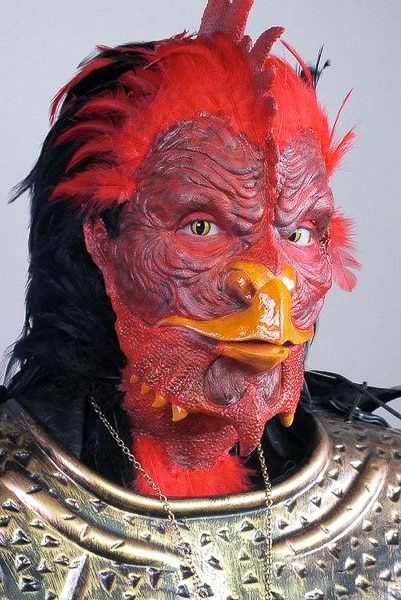
I Started in the Haunt Industry by Being a Big Chicken
The way I got started in the haunt industry was by being a big chicken. When I was younger, I was terrified of horror films. Even the haunted mansion at Disney World terrified me. The first time I rode it, I had to ride it nestled between my parents in the Doom Buggy. I remember closing my eyes at certain times just because it got too overwhelming. I then refused to watch horror movies with my friends. They’d watch horror movies and I’d sit next to the television and watch them watch horror movies, which may have actually been the beginning of me thinking like a designer.
I’m guessing I was seven or eight, maybe nine, and my friends were watching the original “Creature from the Black Lagoon,” and I was doing my due diligence by sitting next to the television so I couldn’t see the screen, and I was watching their faces. They convinced me that the monster wasn’t on screen and they just wanted me to see what the movie looked like. So, I came around the corner and sure enough, there’s the black-and-white Creature from the Black Lagoon right in the middle of the screen. I was like, “That’s not nearly as scary as my imagination made it out to be.”
I then became fascinated with horror films, especially really, really bad ones. Why watch a good horror film when you can watch an awful one?
I saw “American Werewolf in London” on its premiere night seated in the second row of the movie theater. Just imagine how giant it was—I was looking up the werewolf’s nose. Although it’s not the ideal horror film, for me it was a great bridge, because I thought it was the best of all worlds. It was scary when it needed to be scary, heartwarming when it needed to be heartwarming, and funny when it needed to be funny.
To this day, if you’re looking for gore that’s well made, well plotted out, and has a great story, I still think John Carpenter’s “The Thing” is one of the coolest films ever. There’s a scene in there that made it the first film to ever get an R rating for excessive gore, even though it was all fantasy. There’s also a scene where they take a scalpel and drag it across a guy’s thumb. That’s what made me wince more than anything. That helped my aesthetic in thinking about how I want to handle blood, guts,and gore.
I did a live haunt in a friend’s basement during this time. I learned that using red fingernail polish as blood on your face is a really bad idea. We didn’t have any nail polish remover, but I’d been picking at it so long there was a perfect red mark exactly where the “blood” had been streaming down by my eye. I’m surprised I’m not blind.
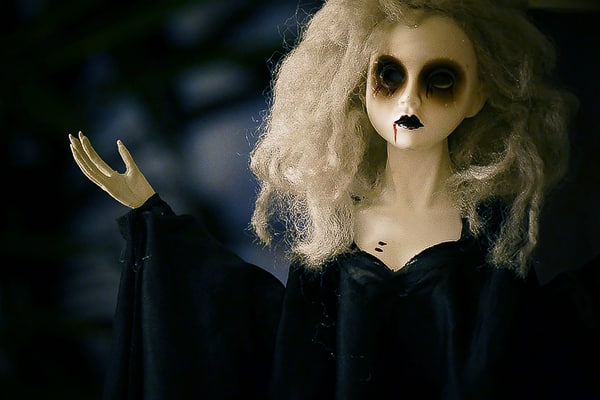
From Puppetry to Manager at Busch Gardens Tampa
I veered away from horror for quite some time and did live theater—puppetry. I was part of a touring puppet company in Chicago called Chi-Town Puppet Theater. I also did theme parks, improv, and a lot of other theatrical endeavors. I both acted and directed in live theater, and then I started working at Busch Gardens, first in Williamsburg. I was there for two seasons, and then I had the opportunity to go to work full-time at Busch Gardens in Tampa and started as a performer. I was at the manager level, but this doesn’t mean anything if you’re not in the theme-park industry. They were looking to put together a brainstorming team to create a Halloween event for Busch Garden’s Tampa. To be more accurate, they referred to it as a Fall Shoulder Event. They didn’t really have anything like Disney’s Imagineers at Busch Garden’s Tampa, so they decided, “How can we do some research and development to create a Fall event that’s going to be profitable and sustainable?”
In 1999, I was selected along with Lisa Leveret, who came from the merchandising department, and a woman named Lisa Mezzy, who came from business analysis to work on this project. We formed a group called TRIBE, an acronym that stood for “To Realize Innovative Busch Experiences.” Our acronym was also our mission statement. We were put in our own set of offices, given resources to do research, and were focused exclusively on the creation of this new Fall event.
Our first thought was to do anything except a Halloween event. At the time, Universal Studios Orlando had a leg up on that. But we discovered nothing makes money in the Fall besides Halloween. So, we dove in with both feet, and none of the three of us was particularly Halloween-minded. I enjoyed it, I thought it was fun, but I had a lot to learn, so I was coming at it form a theatrical and theme-park standpoint. Lisa was coming at it from a financial standpoint, and the other Lisa was coming at it from a “what can we sell and how can we make money?” standpoint.
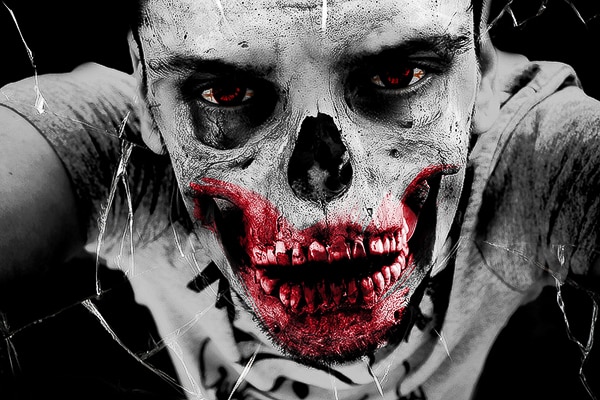
Then, Creative Director at Howl-O-Scream
That’s how Howl-O-Scream was born. It was one of the few haunted attractions at the time that actually earned back its investment the first year, mainly because we were incredibly frugal. I look back at some of the things we did, and a lot of them were probably not good choices. I continued to become more interested in the haunt industry by attending seminars. Not only did we do research at Knott’s Berry Farm, Universal California, and Universal Orlando, but we also attended a festival that took place in New Orleans.
Rob Anderson came in as the Creative Director for Howl-O-Scream for the first couple of years. I also had the joy of playing the icon character, Dr. Simon Livingsdoom, for a few years. I did a lot of media as him and became the unofficial official media spokesperson. With Rob, I learned from one of the best. When he left, I took the Creative Director position in house. That’s when I got my “big break.” I designed Afterhours Club Muse, which, to this day, is probably one of my favorites.
Claude Smith became the Creative Director, and I moved to Creative Producer. I did Howl-O-Scream for the first 15 years. I learned a lot about marketing, merchandising, culinary, etc. Eventually, I became the Director of Production and was responsible for the development of all the new shows at the park. I learned how to work with outside contractors, do auditions, choreography—everything about theme-park stuff.
And Now, an Independent Contractor
I went on to become an independent contractor. I’ve had the opportunity to work on haunted attractions as far north as Edmonton, Alberta, Canada, at Fort Edmonton Park, to as far south as here in Tampa. I worked in Texas, Minneapolis (three years at the Vault of Souls, which was another highlight of my career), and family-friendly stuff at Tampa Zoo. I started writing for Haunt Journal Magazine and began doing presentations at different conventions, which led to A Scott in the Dark.
A Scott in the Dark started on a bus when I was at an escape-room convention in Niagara Falls, and the podcast is a great way for me to keep in touch with the haunt industry. This year, I hosted the Haunted Attraction Association’s Oscare awards, which was so much fun. So, I’ve done a little bit of everything.
To sum it up, I was in the right place at the right time. I said yes whenever I got the opportunity to do something new, and I surrounded myself with people who really knew what they were doing and paid a lot of attention to them.
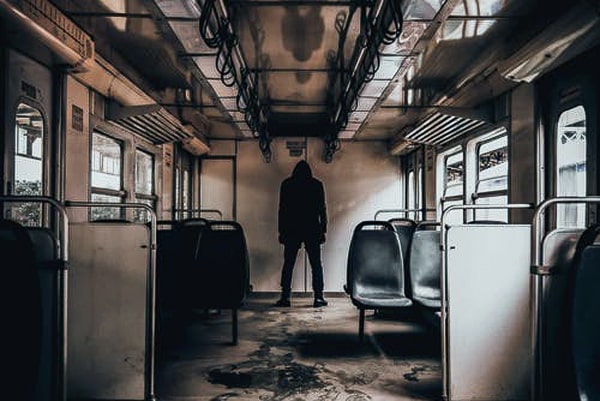
A Question about Venue Flow
A question came in from Patrick asked about venue flow. A venue flow, in my mind, is the script for the haunted attraction. I know there’s a lot of haunted-attraction owners out there who don’t think you need a script, who are just putting together room after room after room. That’s not the way I like to do haunts. I like to make sure there’s a strong story, because I think that works to help blend your marketing and your experience. I also think it encourages guests to return year after year. When I write scripts for haunted attractions, they usually end up being about 25 to 30 pages long—and that’s using a very tiny font.
For the venue flow, I use a grid system with a series of columns to accommodate lighting designers, audio designers, scenic designers, makeup designers, costume designers, budget, etc. The first column is a narrative that explains, room by room, what happens—how the story unfolds, what the guest’s experience is, and introduces the characters. The next column in the venue flow is, usually, the scenic call-out. The third column is usually lighting and atmospheric. The fourth column is a call-out for audio. There are columns for venue flow, costume and makeup, and number of cast members per room.
I have all of these columns, because they all have to work together. It makes a more integrated experience. There are always going to be crossovers. When you have scenic involved, obviously audio has to be placed somewhere, and I don’t like speakers or lighting instruments to be obvious. It’s important for everyone to know, room by room, where those things are going to fall. So, that’s what led me to do the venue-flow concept.
At the end of the venue flow, I always do what I call a flavor board—found images, room by room, that look like things I want. It might be a costume available off the rack or some really dark and sinister thing on Pinterest or from another haunt or a movie or whatever. The entire document goes through an approval process. Everyone has a sense of ownership. The document is the show bible, and it gets distributed to the designers, to lighting, audio, scenic, costumes, makeup, etc.
How to Find Financing for Haunted Attractions
Now, here’s a question about the business side. Matthew asks, “How do you find financing for haunted attractions?”
First and foremost, it’s going to cost you more than you think it’s going to cost you. That’s just the bottom line. My suggestion is, do your creative and immediately go straight into the budgeting process. Put numbers to things early, even before you start asking for money, because the better plan you have, financially, and the more it’s written out on paper, the more likely it is you’ll either be able to get a loan or investors or sponsors or in-kind sponsors or what I call, instead of fundraisers, friend-raisers.
For my clients, I usually focus on performance labor and rehearsal labor. I have a great spreadsheet that tells me not only what we’re spending per room in labor in the haunted house but per hour, per night, and for the entire run. Because it’s a spreadsheet, if we need to cut money, I can always go back and either shorten the hours so it automatically gives me the new numbers or change the pay rate.
One of my clients, for example, is a non-profit, a 501(c)3. Their haunt a fundraiser for them. I said, “Here’s the documentation, here’s what it’s going to cost you per hour, and here’s what you’re going to get for it.” They’ve been able to find the money only because I was able to document it very clearly right up front. Don’t just say, “Give me ten grand and I’ll give you a haunted house,” because nobody is going to believe that. You may find there are ways to save money after you open.
Once you’ve got your plan together, be sure to include your marketing numbers, because, even if you build the best haunted house in the world, if you don’t market it, nobody knows it’s there. There are clever ways to market, but I won’t go into those now. I want to interview some of my marketing friends about how to market a haunted attraction.
You can try to find investors who’ll always want a part of it. I’ve also worked on haunted attractions where I’ve deferred my cost in lieu of partial ownership. I’d have been what’s considered an in-kind investor. I invest my time, my skill, and my experience with the hope of being paid as an owner later.
I’d also suggest Kickstarter for fund-raising if your project is one-of-a-kind—both recognizable but unusual. Make sure you’ve got something that’s will catch people’s eye.
Another strategy is to partner with a strip mall that’s just lost one of its big anchor stores. Brick-and-mortar stores are getting more and more scarce. Perhaps you can negotiate a door split. Although that may not be a lot of money coming in, it’s money you don’t have to spend in rent or on a lease. So, look for those partnerships.
Financing may be available through a business loan, but you must have a strong business plan. The more documentation you have, the better. I’ve been very much involved, even at theme parks, with sponsorship. We had situations at Busch Gardens, for example, where we had haunted houses that were sponsored by external companies. It was my job, as the Creative Director, to find ways to incorporate their product into those houses. So, I do have some experience with sponsorship and what you can offer. It doesn’t cost you a whole lot, and what you’re offering is an opportunity for the sponsor to get their product in front of an audience—the audience for the haunted attraction.
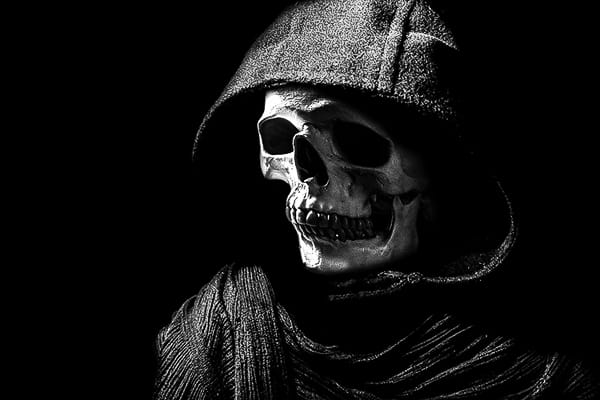
Safety
The final question I covered in the Listeners’ Choice podcast had to do with safety in your haunt. Make sure you have enough money in your business plan for fire suppression, if it’s required, and, if you’re doing an indoor haunt, make sure you have proper lighting and the kill switch and emergency lights are installed. Don’t ever scrimp on safety because, I promise you, when—not if—something goes wrong, it can eat up every ounce of your profit, and it damages your reputation. This means you may not work again in the future.
So, be sure you’ve addresses safety and insurance. Find out who your Fire Marshal is and who’s going to be coming out and doing your final walkthrough. Keep them involved in the planning stages. Safety is always job one, and I used to say that to every single one of my haunted attraction kids. I don’t care how good the scare is. If it’s not safe, you’re not going to do it. Make sure every performer knows how to be safe, every technician knows how to be safe, and that your installations are safe. There’s no justification for risking the well-being of the haunt as a whole for one quick fix. No matter how much time you spend on it, there will be a guest who finds that one nail that’s sticking up or that one fixture that’s only partially circuited and it’s live current coming through. No matter how hard you work, someone is going to find the chink in your armor. You can’t be too diligent when it comes to safety. Design for in. Don’t do it as an afterthought.
And that wraps up our blog on Listeners’ Choice, volume 2. If you’d like to ask questions, suggest topics, or even make comments on what I’ve said or written on any podcast or blog, please go to our Facebook group, go to AScottInTheDark.com or my website, or email me at [email protected]. Until next time, rest in peace.